12th March and the weather has been wild, the famous March lion, so I look forward to quieter conditions soon - a full moon on the equinox may initiate a shift! We had a gust of 63mph on 10th and it ripped a hole in my six year old polythene on the tunnel: I was on a stepladder for 20 minutes with tape, managed to pull it together for now, but the tunnel may need a recover this spring.
More worryingly, my greenhouse was swaying visibly! I am sure it should not. Gardening is full of surprises, mostly good and March is the beginning of seven months of many sowings. We have already planted (from February sowings) a few radish, peas for shoots, turnips and spinach, all multi-sown and now protected by fleece right on top of the seedlings.
March also sees many harvests from overwintered plants if your climate is good for that, not Ontario! We are fortunate to be mild oceanic, which also means the summers are not hot.
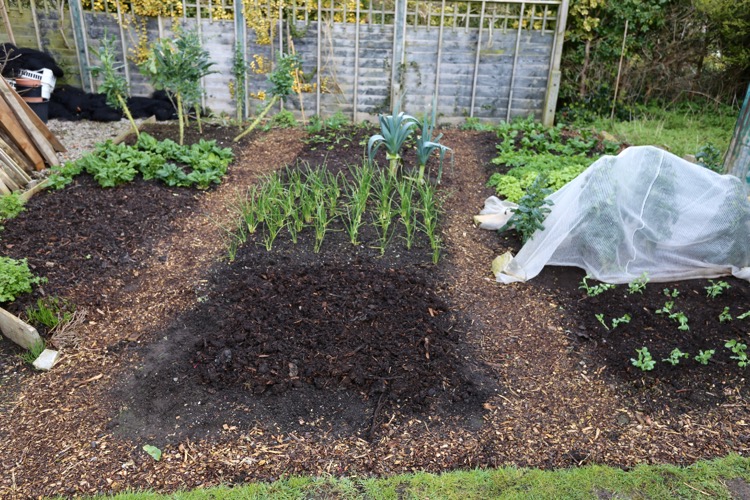
Small garden 7th March after clearing beetroot and mulching with homemade compost, spring onions behind were planted October sown September
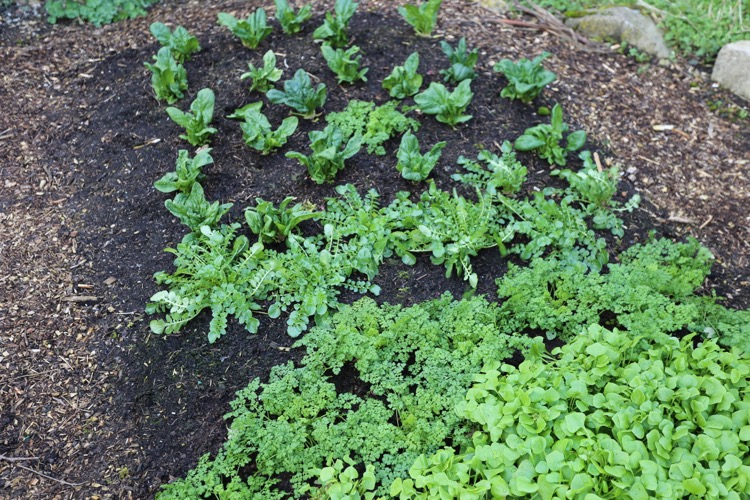
Salads amll garden planted last autumn, from front is winter pursland, chervil, lan cress and spinach at back, Medania
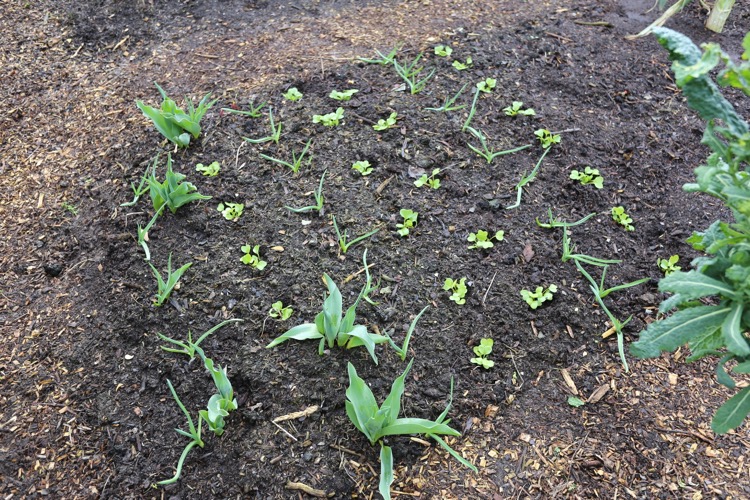
I popped garlic cloves in after clearing beans early November, then planted the radish on 7th March, 4 week old seedlings 4 per clump, now fleeced
Seed starts
Improving your propagation skills can massively increase harvests, by extending the season and ensuring that beds stay full of plants, with few gaps at any time. The pallet we just installed helps me raise a thousand or so extra lettuce mostly, for selling salad bags this spring.My propagation video has a lot more detail about sowing and germination. Huw Richards of Huw's Nursery also made a video about my pallet idea, which is helping him reduce rodent damage to seedlings in his polytunnel. Huw is only 19, full of passion for gardening and great ideas, just wrote his first book too.
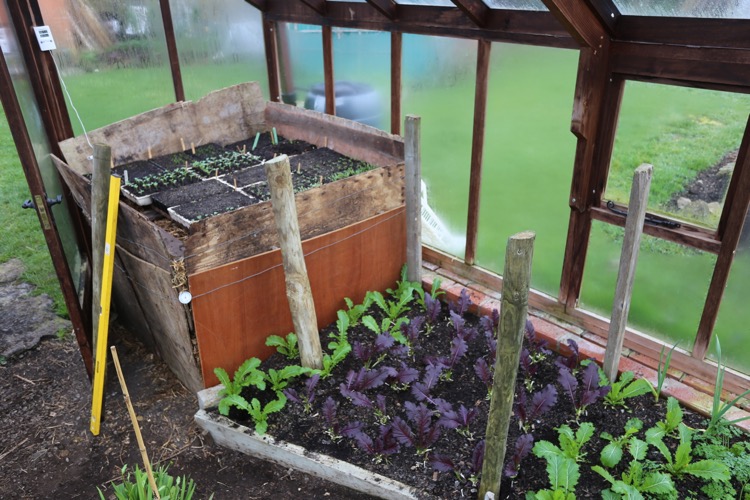
March 4th and already I need more space for seedlings, after we pricked out many lettuce seedlings
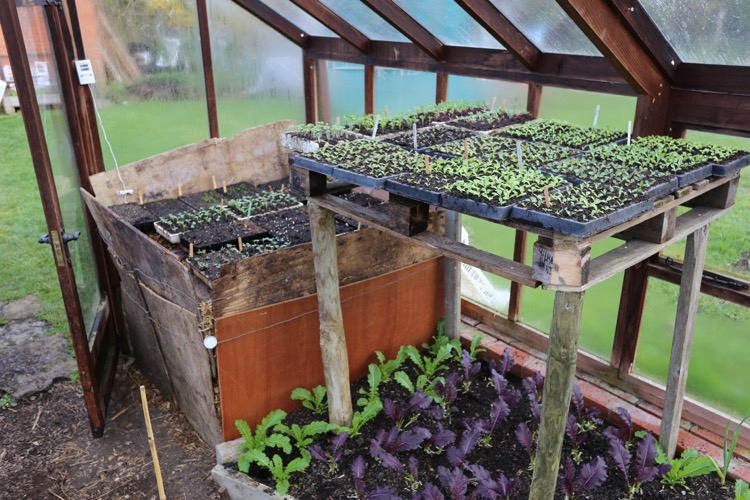
Adding space for seedlings with fence posts and a pallet, over exiting plants we are still harvesting
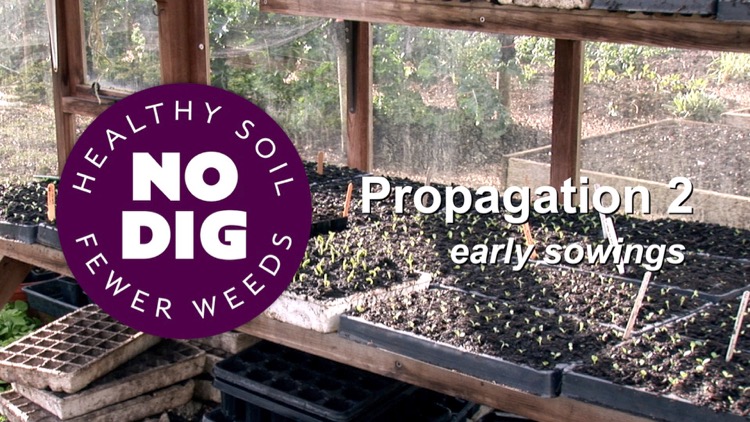
Video on succeeding with early sowings, using a windowsill to improver germination and other tips
Not all plain sailing
Two problems I have encountered in propagation are ammonia gases from the hotbed, which singes some leaves for a few days when the manure is fresh, and too much wood in compost. This was my own compost I was trialling, not a success for propagating! But great for mulching beds and feeding soil life from the surface - it is mostly decomposed, but potting composts need amazingly little undecomposed wood for seedling growth to be stunted.When composts with a little undecomposed wood are on the surface, plants root into soil and compost below and grow healthily. as Homeacres demonstrates.
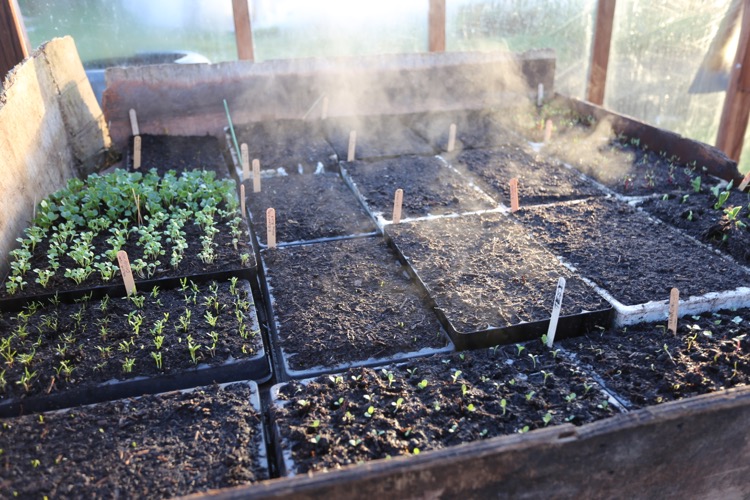
Five day old hotbed steaming and some of the steam has ammonia, I give extra ventilation
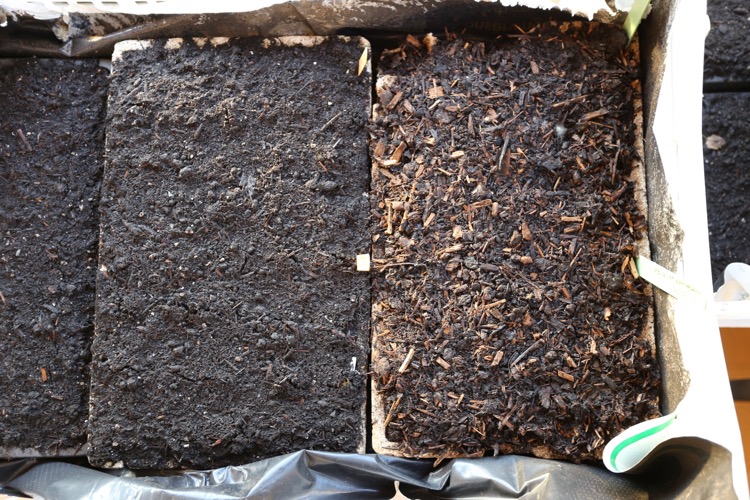
Bought multipurpose compost on left, sieved homemade on right which still has enough undecomposed wood to slow seedling growth
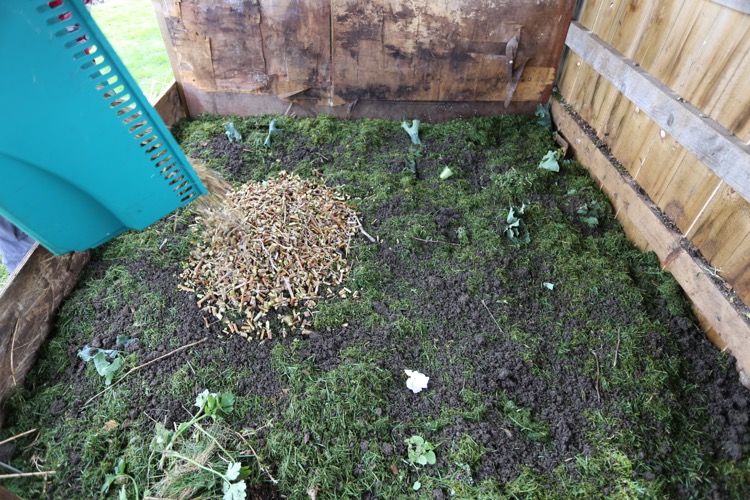
Compost heap March Homeacres, adding the apple tree prunings after shredding, mix of green and brown in the heap
New sowings
I am sowing tomatoes next week, together with celeriac and celery. You can also sow any of the seeds I show here and it's a great time for sowing peas outside, as long as you don't have mice, in which case sow indoors.You can plant first early potatoes and onion sets, sow carrots and parsnips outside in milder areas, but there is no rush on that one, best wait for mild conditions. Wait until April for sowing cucumbers, sweetcorn et al.
First plantings - planting not sowing
Current sowings are frost hardy and can go into cool soil, helped by fleece/row covers sitting on top. I find that works better than using hoops, also the fleece does not blow away!The peas are Alderman, sown three to a cell and planted deep as 16 day old seedlings, see how they look 13 days later (yesterday 11th March).
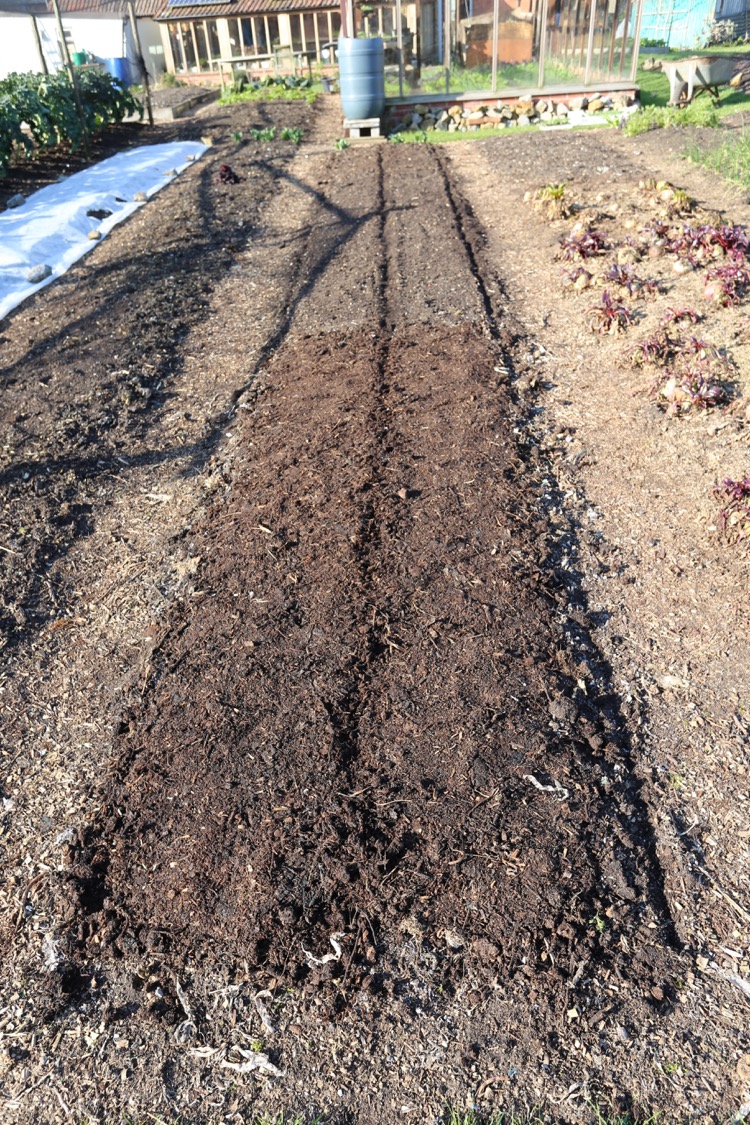
26th February in mild weather, I have used the dibber to make lines by eye
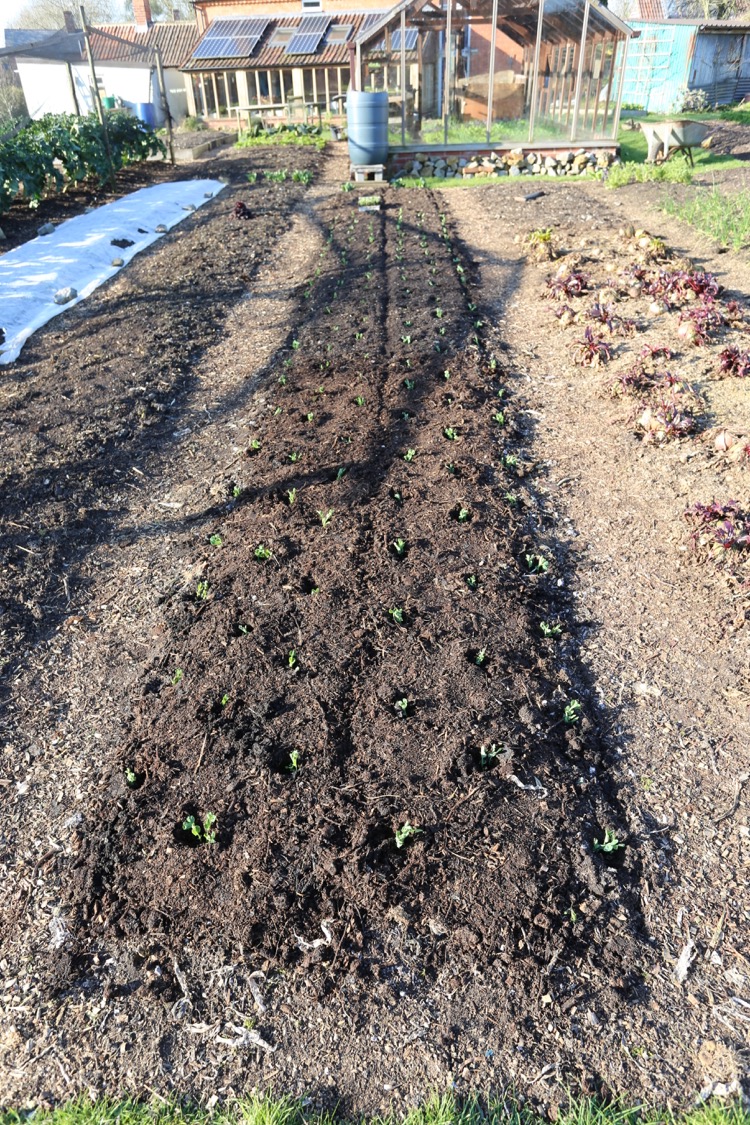
Small pea modules were 16 days old seedlings, popped into holes made by the dibber, guided by my lines
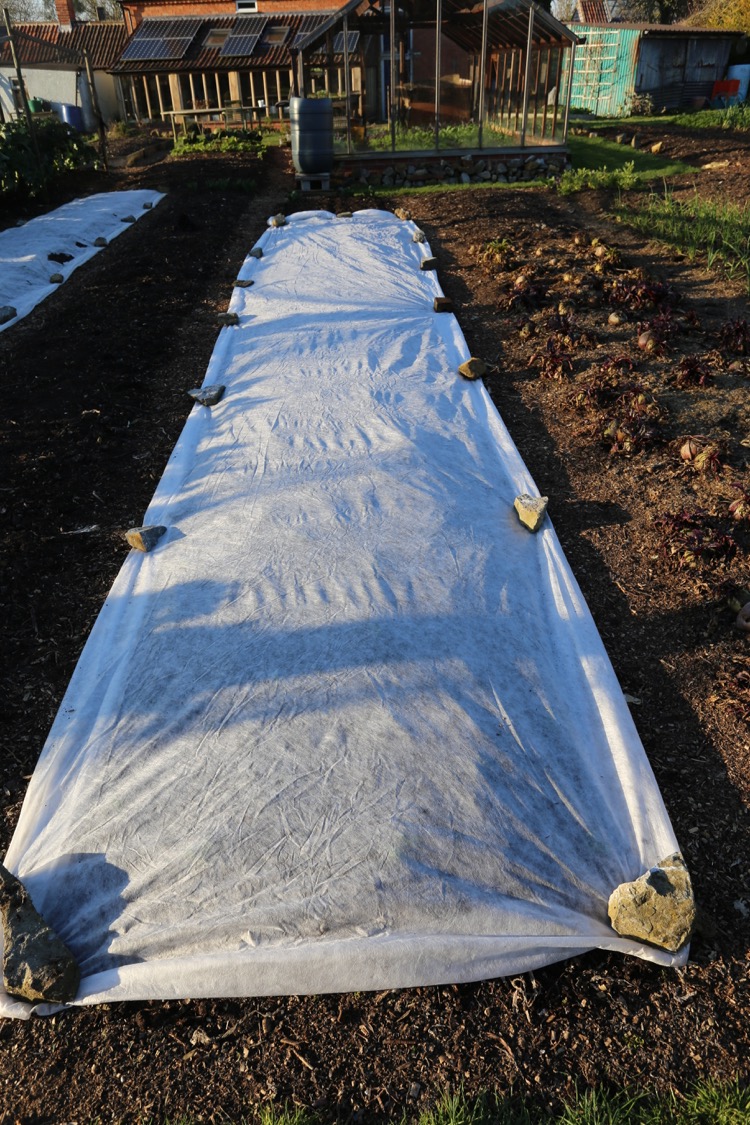
Bed fleeced over and held in place with some stones, fleece was already used in 2018, not washed!
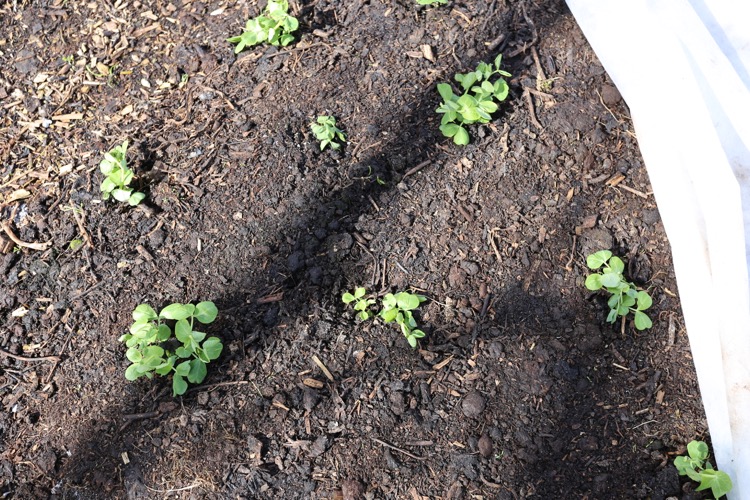
13 days later and the seedlings look healthy for such an early planting, they are for shoots
My continuing trial
This is my thirteenth year of comparing growth in dig and no dig beds, side by side and with the same amount of compost. See this page for details. We made the first plantings 11th March, about half of both beds are planted so far.Last December I dug the left hand bed plus incorporated two large barrows of compost - 50% horse manure, 25% homemade and 25% mushroom compost. The same amount of compost simply went on top of the no dig bed. Both beds have been raked to disturb/kill baby weed seedlings and break up lumps.

February dig bed left, no dig right
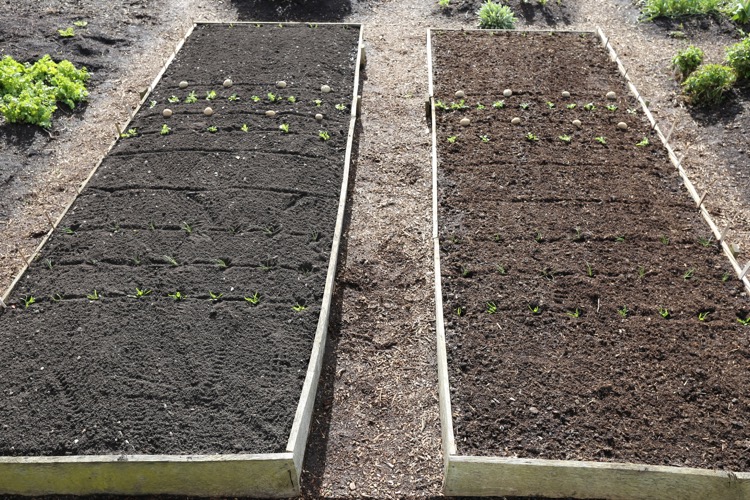
11th March first plantings include spinach, radish, turnip, onion, beetroot and…
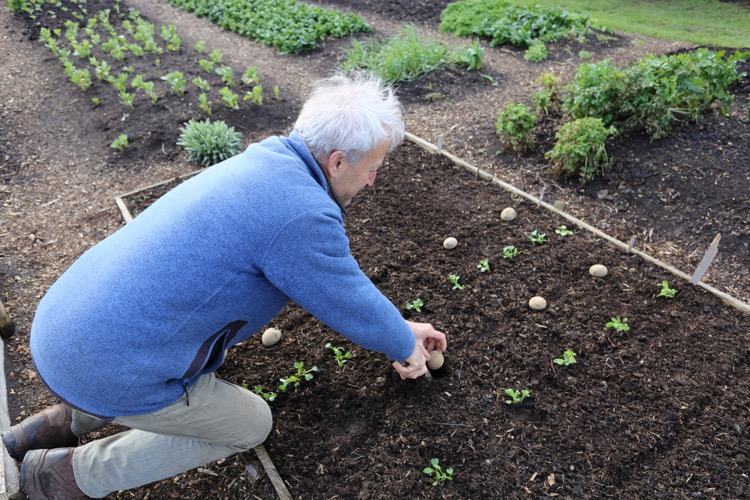
Charles planting potato first early using trowel to make a slit and pop them in with 5-7cm/2-3in compost above top of potato. Radish between are a catch crop.
Winter vegetables
Savoy cabbage is a winner from sowing early to mid summer, depending on your climate. I find they are less popular with pigeons than other brassicas, and their hearts are frost hardy.Pak choi is another hardy vegetable but not easy to grow with so many pests loving its tender leaves. Outdoor greens like these complement the continuing array of stored and root vegetables.
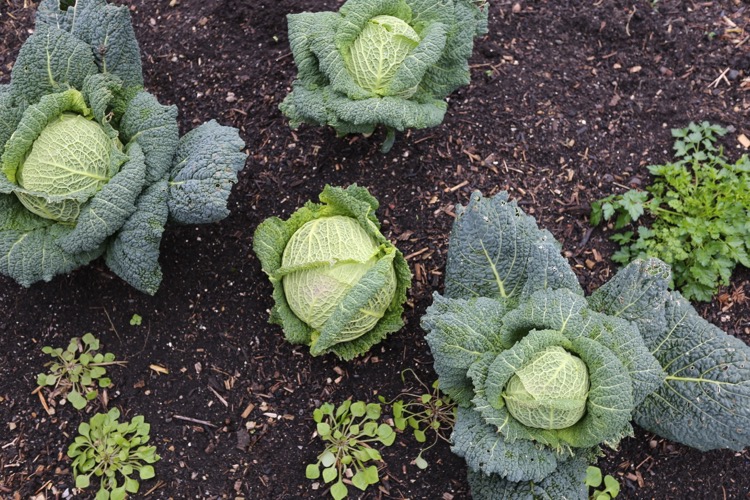
Savoy cabbage Paresa F1 sown early July planted late July with parsley popped between in August & self sown winter purslane
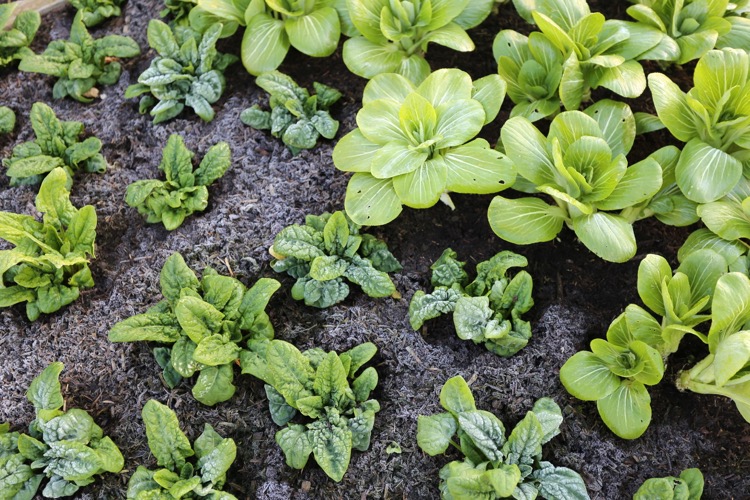
Sown 14th September planted 17th October, spinach Samish F1 (not impressive) and pak choi Yuushi F1 from Mr Fothergills, outside
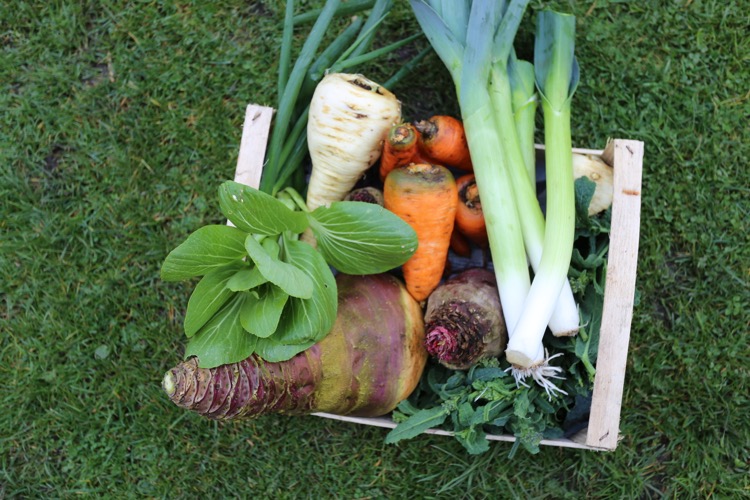
8th March pak choi, multisown leeks, outdoor spring onions and kale shoots, beetroot just harvested, carrots from store are Oxhella
New online course, no dig gardening
My new course went live 12 days ago and is selling well. Many buyers are in the USA, a fair few in Europe and it's a way of gaining loads of knowledge about no dig, when you can't come on a Homeacres course.
This link is for a video explaining how the online course works, including the quizzes.
At Homeacres we had unexpectedly glorious weather for the weekend course in February sunshine, then did amazingly well over two days in March winds. There is already lots to see here and for winter courses, the polytunnel and greenhouse are useful. Steph's lunches always nourish and inspire, her Creative Kitchen book has many of the seasonal recipes.
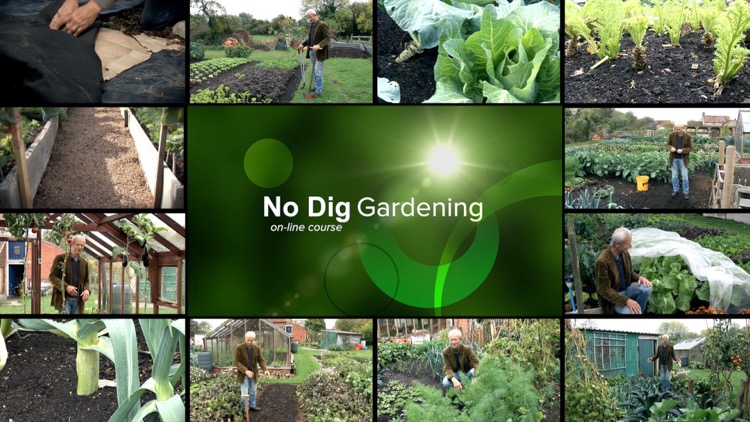
Video thumbnail for my online course: 20 lessons all with quizzes, 100% pass for a certificate
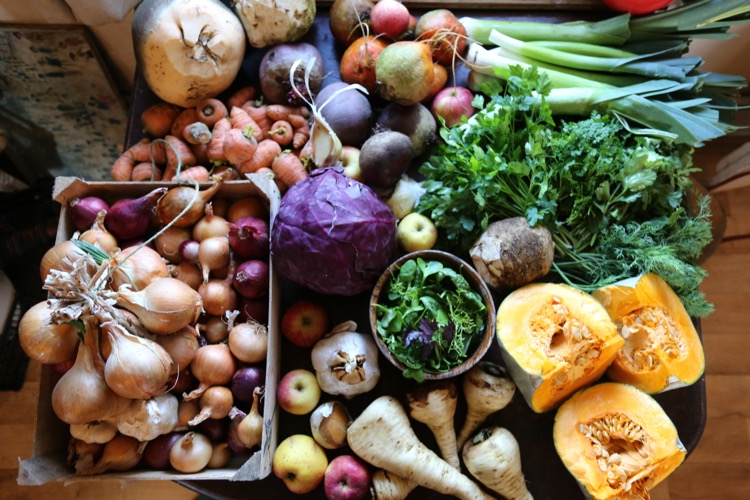
Video thumbnail for my online course: 20 lessons all with quizzes, 100% pass for a certificate
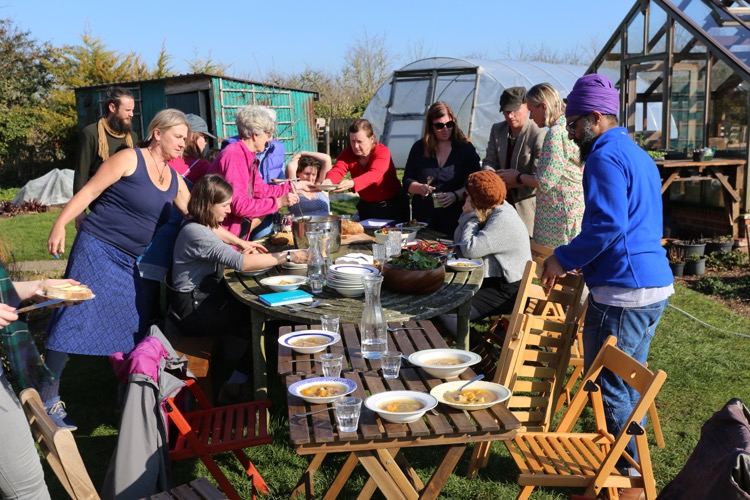
February 23rd-24th and we ate outside on both days – often don’t do that in summer!
Steph's talks
Steph is a skilful gardener as well as chef. She is giving two talks at Gardeners World Live in June (Birmingham NEC), and before that is giving a no dig talk at Tobyfest in Powderham Castle, Devon on Friday 4th May.









































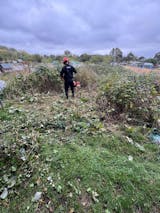
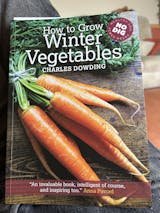
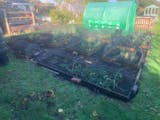
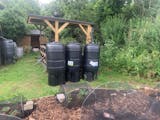
0 comments